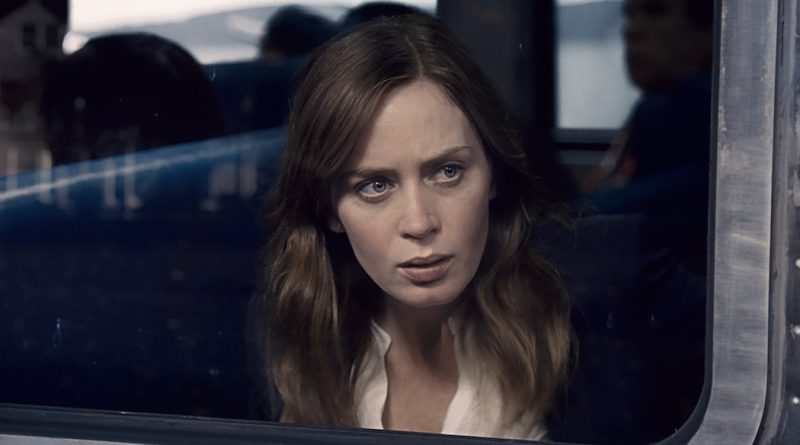The Girl on the Train Review: Surprise…the Book is Better than the Movie
By: Nathan Helfferich – Staff Writer
Paula Hawkins kept readers around the world on the edge of their seats with her psychological thriller novel “The Girl on the Train,” released in early 2015. The well-received novel was translated to the big screen with a highly anticipated movie adaptation released under the same title on Oct. 7.
A #1 New York Times Bestseller for 19 weeks, “The Girl on the Train” follows the story of an unemployed, divorced alcoholic named Rachel (Emily Blunt). During daily train rides, Rachel endures the pain of passing by her old house and seeing her ex-husband Tom (Justin Theroux) and Anna (Rebecca Ferguson), the woman with whom he cheated on Rachel.
Rachel also observes a particular couple that lives a few houses down from Tom and Anna. The couple, Megan and Scott (Haley Bennett and Luke Evans), seem to live an idyllic life, leading Rachel to become infatuated with them. One night, Megan mysteriously turns up missing. While Rachel knows she was in the area the night of the disappearance, her drunken memory restrains her from remembering exactly what happened. She takes it upon herself to uncover the mystery, leading her to unforeseen revelations and challenging truths.
In the novel, Hawkins tells the story from the viewpoints of three women: Rachel, Megan, and Anna. This allows the story to be revealed bit-by-bit with crucial information constantly just pages away. The movie adaptation, under the discretion of screenwriter Erin Cressida Wilson, unfortunately loses much of the anticipation that the book successfully achieves with its unique storytelling style. While the style remains the same between the storytelling of the book and movie, the film’s revealing of pivotal events lacks the build up of curiosity and surprise that the book thrives on.
This, in part, is due to the handling of character development in the film. While Luke Evans’ portrayal of Scott is sufficient, the writing of his character does no favors for his role whatsoever. Scott, a pivotal character in the book, is left underexplored in the film as his inner struggles and interactions with Rachel unfold with the investigation of Megan’s disappearance.
The film’s portrayal of Megan’s therapist Kamal Abdic (Edgar Ramírez) also lacks meaning. A questionable and unexplained change to his ethnicity will throw off those familiar with his character from the book. On top of that, Ramírez’s work with the character seems half-hearted, which isn’t surprising considering the busy year he’s experienced in the film industry (see: Joy, Gold, and Hands of Stone). In short, the movie simply does not capitulate the complexities of characters that garnered well-placed attention in the book.
The most positive takeaway from the film is Emily Blunt’s portrayal of Rachel. Blunt has silently dominated the film industry with an eclectic compilation of roles over the past decade. From her supporting role in the fashion flick “The Devil Wears Prada” to a lead in “Sicario”, a movie surrounding the war on drugs, Blunt had proven to be a versatile actress on the rise.
Blunt’s performance in “The Girl on the Train” only further demonstrates her wealth of talent. Her portrayal of Rachel is packed full of emotion and embodies the inner struggle of her character. Her facial expressions alone would be enough to convey the intricate, mental challenges that she suffers.
As the old saying goes, “the book is always better than the movie.” “The Girl on the Train” is no exception to this. Blunt’s captivating and definitive portrayal of Rachel carries the movie, but dull supporting characters and questionable derivations from the book halt the movie from finding success.
If you haven’t picked up the book, it’s a read worthy of your time. And if you truly want a psychological thriller experience on the big screen, you’d be better off watching “Gone Girl.”
Rating: 2 out of 4 stars
Photo Courtesy of bustle.com

